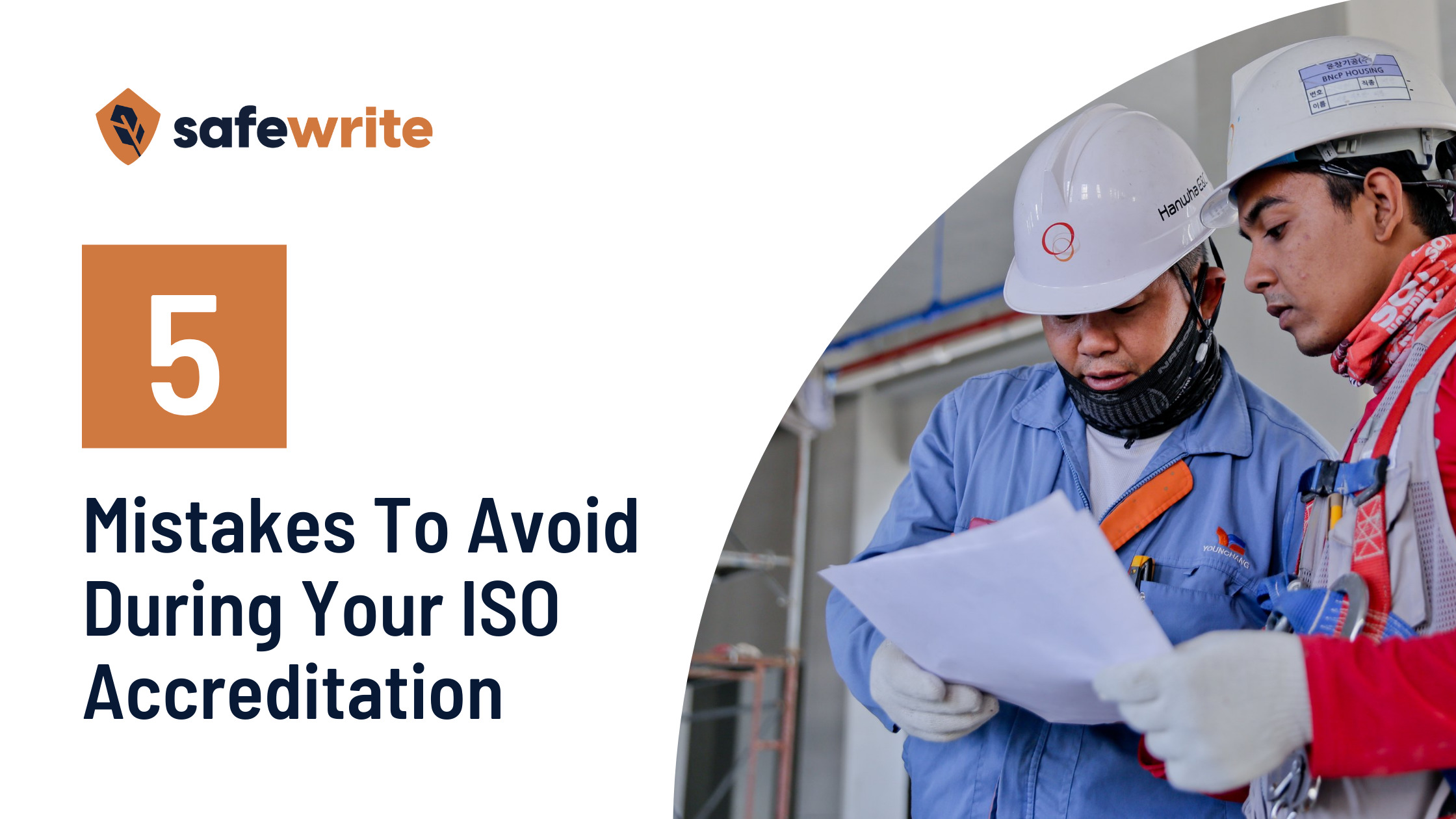
16 Feb 4 Mistakes To Avoid When Going Through ISO Accreditation
A large majority of our SafeWrite users utilise the platform as a means of becoming accredited and ISO compliant. It is a great way to stand out from your competitors while also systemizing and streamlining your Quality, Safety, and Environmental processes.
We’ve seen hundreds of business successfully achieve ISO accreditation. However, for some businesses it can be challenging. We’ve compiled what we think are the top 4 mistakes businesses make when going through accreditation and how to avoid them:
1. Lack of Clear Objectives
Many business owners and consultants implement SafeWrite’s tools as a way of speeding up and easing the process, which is fantastic! However, some managers have difficulty communicating these objectives clearly to the entire staff.
The larger a firm is, the more important it is to clearly outline why implementing a strategic change is important to the entire team. A strategic change also gives managers an opportunity to emphasize the benefits for being successful in this process. These processes need to be adopted company wide to ensure the full benefits are realised.
2. No QMS Adaptation
Your Quality Manual is the bedrock of your QMS, it is the go-to resource for all workers to get an understanding of what needs to be done, how it needs to be done, and what measures need to be in place. As a result, it needs to be a living document that consistently adapts and changes to the growing systems within the business. Surprisingly, many businesses fail to undergo regular reviews of their documentation, which ultimately comes back to bite them during surveillance or recertification audits.
SafeWrite’s platform has a purpose-built Policies Manager to effectively manage all internal processes and documentation. This makes it easier to manage the upkeep of your processes through automatic version control and staff notification via email.
3. No Management System Evidence
A customer quality manual isn’t enough to become ISO certified or maintain ISO certification. Auditors will need to see evidence that processes are set in place and documented. Auditors want to see that your organization has been “practicing what you preach.” This is often where many businesses fall short. Excessive paperwork and spreadsheets that systems have traditionally utilized can hold an organization back.
Luckily, the SafeWrite platform already has pre-built registers, forms, and reminders configured to help streamline these management processes. A user can easily input data to log incidents and assign actions or complete inspections. The system can automatically notify managers or supervisors with a report or notification of corrective action.
4. Surveillance Audit & Ongoing Developments
After a business has become certified, it is tempting to see the project as ‘complete’ and move on to other priorities. This can have a significant effect on the businesses certification status during the annual surveillance audits. These systems need to be maintained and updated periodically to ensure that compliance is maintained and the full benefits are realised.
The SafeWrite platform will help with the ongoing maintenance requirements of an ISO-compliant management system through regular notifications for tasks, expiries, and upcoming schedules.
